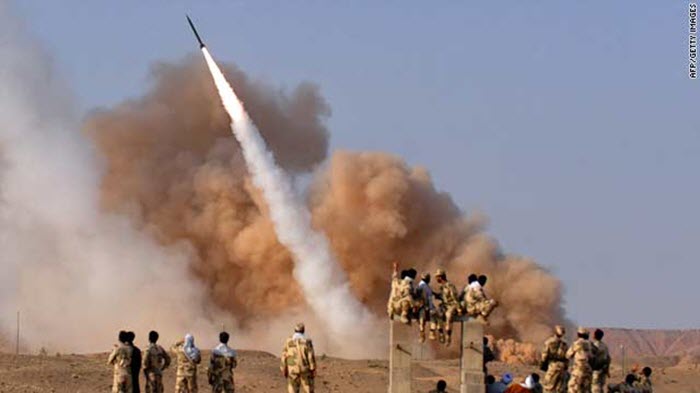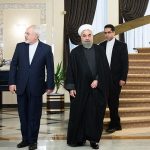by The Iran Project
Responding to Iran’s Missile Tests
- Iran’s continued missile testing is and must be a U.S. concern. The challenge is how most forcefully to constrain Iran’s missile testing while maintaining the U.S. and Iranian commitment to the JCPOA, the most assured way to prevent Iran from acquiring a nuclear weapon.
- The U.S. should fully enforce existing sanctions and expand designations under current law to any entities found supporting, enabling and facilitating Iran’s missile program. Current law provides for such enforcement.
- Any new legislation should focus exclusively on closing gaps in the overall U.S. sanctions architecture that impede Iran’s development of its ballistic missile program, including sanctions against any person or entity found to be cooperating with Iran on ballistic missiles.
- New laws, if deemed important by Congress, should not reinstitute sanctions against Iran’s economy, since such action would be seen by Iran and likely by the P5+1 as a U.S. violation of the JCPOA. It would also embolden hardliners inside Iran.
- U.S. actions against Iranian behavior that falls outside of the scope of the JCPOA, such as its missile program, violations of human rights and terrorism should avoid legislation that would, inadvertently or deliberately, undermine the JCPOA or cause a U.S. violation of an agreement reached with six other nations and endorsed by the UN.
- The most effective tools for limiting Iran’s 35 year-old missile program will remain export controls and working with partners to interdict and seize shipments that could be used to advance Iran’s ballistic missile capabilities. The U.S. should also work with international partners to restrict Iran’s access to such goods, in-line with UNSCR 2231 and other UN resolutions.
- The U.S. should encourage security relations in the Gulf, among all nations of the region, including exploring limitations on the range of ballistic missiles and cooperation on missile defense. Iran would be more interested in discussing constraints in the context of a regional approach. While such an initiative today appears far-fetched, a long-term objective of U.S. policy should be to support regional security and stability in the Gulf. II.
Why Does Iran Have Ballistic Missiles?
- Iran has considered missiles the key weapons system for self-defense since the 1980’s Iraq-Iran War, when Saddam used missiles in the “war of the cities” that killed thousands of Iranians.
- With its missiles, Iran seeks to balance the longer range and more accurate Israeli and Saudi missiles, but they are obviously not comparable to Israeli missiles that are believed to have nuclear warheads.
- Because of its inability to acquire modern aircraft due to effective sanctions, Iran has sought to offset that weakness with a large and diverse stock of short range missiles as deterrence and defense. Iran is now reported to be seeking to purchase modern fighter aircraft from Russia.
Who Is Threatened by Iran’s Missiles?
- Iran’s missiles with conventional warheads do not represent a grave threat to its immediate neighbors or to the United States. Under the JCPOA, Iran will be prevented from acquiring a nuclear weapon for at least 15 years.
- Iran has medium range ballistic missiles with a range of less than 2500 km. that could strike Israel from Iranian territory. Some Iranian short range missiles may be available to Hezbollah. The lack of accuracy of Iran’s missiles limits their military utility but increased accuracy from testing could change the level of this threat.
Does Iran Violate Agreements by Testing Missiles?
- Twice last fall Iran violated UN Resolution 1929 when it tested medium range ballistic missiles. Since the JCPOA Implementation Day on January 16, the new operative UN Resolution 2231 only “calls upon” Iran not to test missiles “designed to be nuclear capable.” Last fall’s testing if done today would probably not be considered a violation of UNSC 2231.
- Would Iran’s testing of medium range missiles violate the spirit of the JCPOA and raise serious questions about Iran’s intentions? The JCPOA does not address the testing of ballistic missiles and UN Resolution 2231 is ambiguous on what would constitute a violation.
- Iran has not tested or developed an intercontinental (ICBM) or intermediate range ballistic missile (IRBM). Iran is likely to test its new Simorgh launcher which appears to be designed only to place satellites into orbit. Although, the development of such launcher capability could be used eventually to build long range ballistic missiles, the Simorgh is not a weapons system.
- Iran’s military establishment may have considered testing longer range missiles if they acquired a nuclear weapon. Iran’s leaders might recognize that since they have foregone the nuclear weapon option there is now no “justification” for long range missiles. President Rouhani reportedly said recently “Iran will constrain its ballistic missile forces to a range of 2000–2300 kilometers. Iran’s strategic defense plan currently sees no justification for higher ranges.
- Korea’s missile testing is not comparable to Iran’s since Korea has fissile material that could be used to make nuclear warheads, has conducted nuclear tests, and is developing long-range ballistic missiles and Iran agreed to the JCPOA.
Reprinted, with permission, from The Iran Project, a news website run by a group of Iranians inside and outside of Iran.






At some point, all this hyperventilating over Iran’s right to prepare for its self-defense in what both Washington and Israel call “a dangerous neighborhood” is going to breech the limits of Iranian patience. And of course that is precisely what Israel and the other anti-Iranians would like – especially if Iran says or does anything that gives its adversaries an excuse for violence.
Payload = delivery system. Nukes, biological and chemical warheads needs rockets to deliver them. But Iran wants intercontinental missiles (2,000+ miles) so that begs the question: why do they need long range weapons unless they wanted to be able to strike Europe and the U.S.?